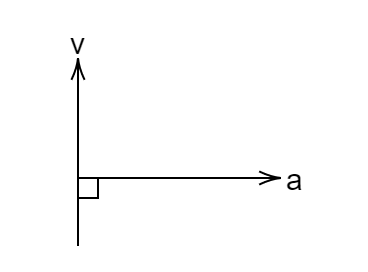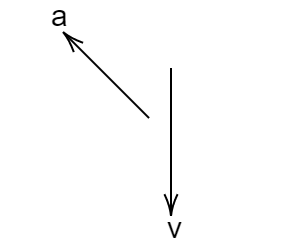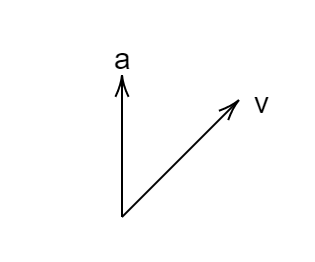
Shown here are the velocities and acceleration vectors for a man in several different types of motion. In which case is the man slowing down and turning to the right:-
(A)

(B)

(C)

(D)





Answer
543.6k+ views
Hint: We should know that velocity is defined as the rate of change of displacement per unit time. If the object is slowing down then its acceleration vector is directed in the opposite direction as its motion in this case. Based on this we have to answer this question.
Complete step by step answer:
As the question says that the man is slowing down, therefore, the acceleration component should be opposite to that of velocity. So, the acceleration vector should make an obtuse angle with the velocity vector.
As given in the question, the man turning to the right can have the direction of acceleration to the right or left. A simple rule of thumb for determining the direction of the acceleration vector is that an object which is slowing down has an acceleration will have an acceleration directed in the direction opposite of its motion. Applying this rule of thumb would lead us to conclude that when the man turns to the right therefore, the acceleration vector component should be in the left direction.
Hence, Fig. (B) represents the correct direction of velocity and acceleration vector for a man.
Now, if we look at Fig. (A), where the velocity and the acceleration are acting perpendicular to each other. So, this represents the circular motion. The direction of the velocity vector is changing but its magnitude is not changing. So, the velocity here is constant. Therefore, it is not the correct option.
Now look at Fig. (C) and (D) both, here the acceleration vector component is in the direction of velocity vector due to which its velocity is increasing with time. So, both are not the correct option.
Thus, the correct answer is option (B).
Note:
Students should be careful when discussing the direction of the acceleration of an object which is slowing down, apply some thought, and use the rule of thumb. The circular motion emphasizes one important aspect of constant acceleration that even constant acceleration, which is unidirectional, is capable of producing two-dimensional motions.
Complete step by step answer:
As the question says that the man is slowing down, therefore, the acceleration component should be opposite to that of velocity. So, the acceleration vector should make an obtuse angle with the velocity vector.
As given in the question, the man turning to the right can have the direction of acceleration to the right or left. A simple rule of thumb for determining the direction of the acceleration vector is that an object which is slowing down has an acceleration will have an acceleration directed in the direction opposite of its motion. Applying this rule of thumb would lead us to conclude that when the man turns to the right therefore, the acceleration vector component should be in the left direction.
Hence, Fig. (B) represents the correct direction of velocity and acceleration vector for a man.
Now, if we look at Fig. (A), where the velocity and the acceleration are acting perpendicular to each other. So, this represents the circular motion. The direction of the velocity vector is changing but its magnitude is not changing. So, the velocity here is constant. Therefore, it is not the correct option.
Now look at Fig. (C) and (D) both, here the acceleration vector component is in the direction of velocity vector due to which its velocity is increasing with time. So, both are not the correct option.
Thus, the correct answer is option (B).
Note:
Students should be careful when discussing the direction of the acceleration of an object which is slowing down, apply some thought, and use the rule of thumb. The circular motion emphasizes one important aspect of constant acceleration that even constant acceleration, which is unidirectional, is capable of producing two-dimensional motions.
Recently Updated Pages
Master Class 11 Social Science: Engaging Questions & Answers for Success

Master Class 11 Physics: Engaging Questions & Answers for Success

Master Class 11 Maths: Engaging Questions & Answers for Success

Master Class 11 Economics: Engaging Questions & Answers for Success

Master Class 11 Computer Science: Engaging Questions & Answers for Success

Master Class 11 Chemistry: Engaging Questions & Answers for Success

Trending doubts
What is meant by exothermic and endothermic reactions class 11 chemistry CBSE

10 examples of friction in our daily life

One Metric ton is equal to kg A 10000 B 1000 C 100 class 11 physics CBSE

1 Quintal is equal to a 110 kg b 10 kg c 100kg d 1000 class 11 physics CBSE

Difference Between Prokaryotic Cells and Eukaryotic Cells

The camels hump is made of which tissues a Skeletal class 11 biology CBSE




